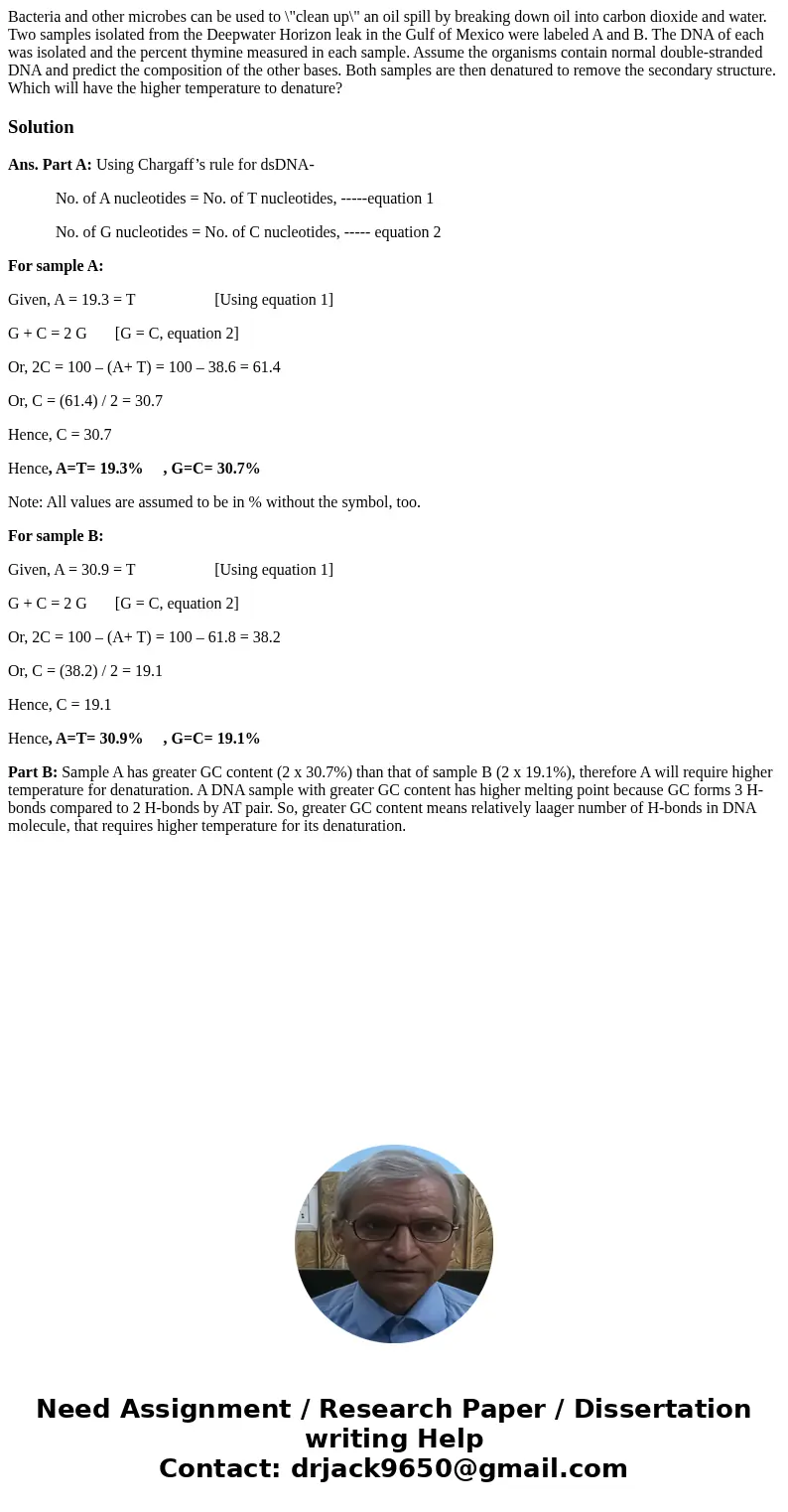Bacteria and other microbes can be used to clean up an oil s
Solution
Ans. Part A: Using Chargaff’s rule for dsDNA-
No. of A nucleotides = No. of T nucleotides, -----equation 1
No. of G nucleotides = No. of C nucleotides, ----- equation 2
For sample A:
Given, A = 19.3 = T [Using equation 1]
G + C = 2 G [G = C, equation 2]
Or, 2C = 100 – (A+ T) = 100 – 38.6 = 61.4
Or, C = (61.4) / 2 = 30.7
Hence, C = 30.7
Hence, A=T= 19.3% , G=C= 30.7%
Note: All values are assumed to be in % without the symbol, too.
For sample B:
Given, A = 30.9 = T [Using equation 1]
G + C = 2 G [G = C, equation 2]
Or, 2C = 100 – (A+ T) = 100 – 61.8 = 38.2
Or, C = (38.2) / 2 = 19.1
Hence, C = 19.1
Hence, A=T= 30.9% , G=C= 19.1%
Part B: Sample A has greater GC content (2 x 30.7%) than that of sample B (2 x 19.1%), therefore A will require higher temperature for denaturation. A DNA sample with greater GC content has higher melting point because GC forms 3 H-bonds compared to 2 H-bonds by AT pair. So, greater GC content means relatively laager number of H-bonds in DNA molecule, that requires higher temperature for its denaturation.

 Homework Sourse
Homework Sourse